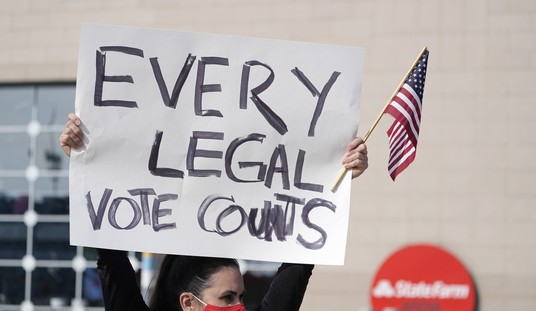Let’s put the Common Core to the test. Specifically, let’s look at a pilot standardized examination created by Smarter Balanced, one of the two testing consortia formed to create exams aligned to the Common Core, the educational regimen that prevails in forty-five states in the nation. We shall leave aside the questions of why everyone has been so quiet about what these tests will look like and whether states outsourcing testing to unaccountable agencies that will in turn dictate the curricula of the schools constitutes a gross violation of the principle of local control. For now we shall simply try to figure out whether these purportedly “rigorous” exams will produce the “college and career readiness” for a “twenty-first-century global economy” that Common Core proponents have so often promised and proclaimed, or whether the Common Core is both utterly superficial and politically biased. What follows is taken from an eleventh-grade English Language Arts exam. That is the class that used to be called simply “English” or “literature.” To shed a little light on what is really transpiring in such a test, we shall add a few of our own questions along the way.
The readings for the exam consist in two-three-page selections followed by several questions. Over the course of two articles, we shall look at excerpts from the first three sections of the exam.
The Science of Meditation
Meditation has been practiced for thousands of years by people from a wide variety of cultures. Though traditionally a spiritual practice, meditation has more recently been identified by medical professionals as a uniquely effective way to improve mental and physical health. . . .
. . . Here is one of the most commonly taught ways to meditate: start by sitting on the floor or in a chair in a comfortable and relaxed position. Once you are comfortable, concentrate your awareness on your breathing. . . . As you focus on your breathing, notice how your mind tends to wander to other things. . . . When you notice your attention wandering, simply acknowledge this new thought, watch it go by, and then return your awareness to your breathing. Don’t try to fight against these wandering thoughts . . .
People who meditate regularly report numerous benefits. They feel calmer and more relaxed, and more prepared and clear-headed when responding to the challenges and frustrations of everyday life. These reported benefits have been supported by scientific research on meditation . . .
Sample question from the actual exam:
“How does meditation work, and what does science have to say about its effects on practitioners?” [a quotation from the selection]
What is the meaning of practitioners in the text?
a) a person engaged in the practice of a profession such as law or medicine
b) a person who does something repeatedly in order to improve
c) a person authorized to apply healing techniques to others
d) a person who engages in something specified
Recommended
Common-sense questions:
Before the twenty-first-century global economy, most people handled “stress” by:
a) praying to God
b) drinking lots of whiskey
c) having intimate and prolonged conversations with their breathing
d) usually a, too often b, and never c, which could have gotten one thrown into bedlam.
The person who regularly practices the “science of meditation” is most likely:
a) a bum
b) a yogi
c) a hippie
d) a total flake
e) all of the above
Reading selection number two:
Sustainable Fashion
“Sustainability” is a popular buzzword these days, but what exactly does it mean? According to the Environmental Protection Agency (EPA), “sustainability creates and maintains the conditions under which humans and nature can exist in productive harmony . . . [and] that permit fulfilling the social, economic and other requirements of present and future generations.” As the idea of living a sustainable lifestyle has become more widespread in recent years, consumers have begun to demand that the products they buy are produced in sustainable ways. It’s a trend that has made a new type of clothing, dubbed “eco-fashion,” very fashionable indeed.
Why has clothing become such a concern for those who want to live more sustainably? Consider that Americans threw away an estimated 13.1 million pounds of clothing and textiles in 2010, or 5.3% of solid wastes that made it into U. S. landfills that year (according to the EPA). . . .
But the environmental impact of clothing involves more than just where our used clothes end up. To calculate the true impact of, say, a cotton T-shirt, we must go back to the beginning: to the farm where the cotton was grown. Cotton is a very water-intensive crop that is typically grown with heavy application of insecticides . . . Cotton that is grown in the U. S. is often shipped off to other countries . . . where it is processed with chemicals and dyes . . . The completed product is then shipped back to America . . . While all that shipping uses up a lot of energy, shipping actually accounts for less than half of the energy that will eventually be used on that T-shirt over its lifetime. According to the Audubon Society, about 60% of the energy cost of a T-shirt comes from washing and drying it—and washing adds a water cost as well.
Given this environmental impact, it’s easy to see why many consumers are bypassing cotton T-shirts for clothing that is produced in more sustainable ways. . . .
Sustainability, however, does not just mean being good to the environment; it also means being fair to fellow human beings. Etc.
Sample question from the exam:
“The clothing industry has not been operating in an ecologically sustainable way.”
Click on all the details that support this conclusion.
a) Growing cotton uses a lot of water.
b) Cotton growers use a lot of insecticides.
c) Etc. through f).
Common-sense questions:
The adverb sustainably found in paragraph 2 would most likely be found in which resource:
a) Samuel Johnson’s Dictionary of the English Language
b) The Oxford English Dictionary
c) The American Heritage Dictionary
d) The Tree-Hugger’s Guide to the Planet
Though not stated explicitly in the passage, who is least likely to be the friend of the American farmer?
a) A vendor at a rock concert
b) A fashion designer indifferent to Eco-fashion
c) An employee of the Environmental Protection Agency
d) Your mother who wastes energy washing your T-shirts
The term that best describes the activities outlined in paragraph 3 is:
a) The international T-shirt shuffle
b) Eco-homicide
c) Commerce and free exchange
d) Economic imperialism
For further “rigorous” reading selections that lead to “college and career readiness” in a “twenty-first-century global economy”—and a few answers to our questions about standardized testing under the Common Core—we shall continue this exam tomorrow.

























Join the conversation as a VIP Member